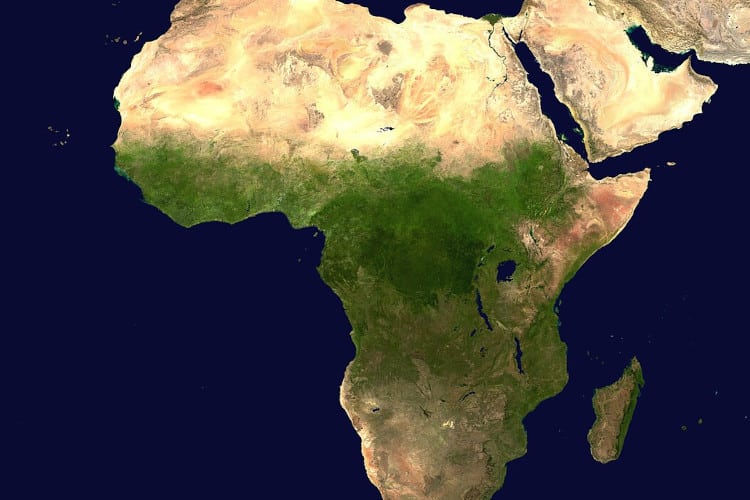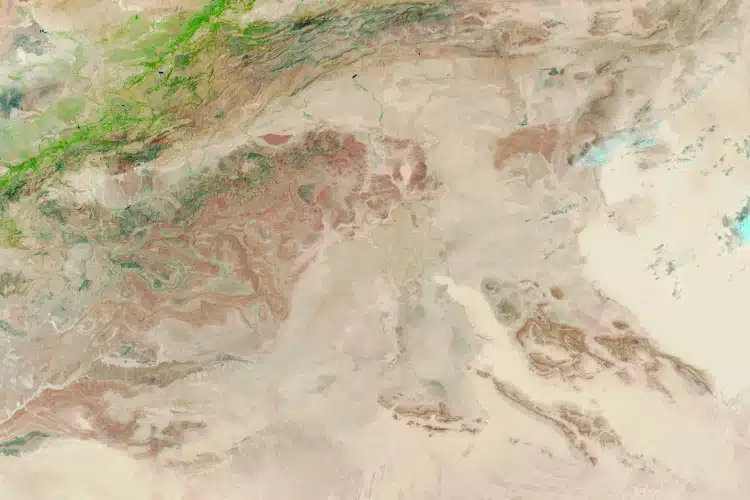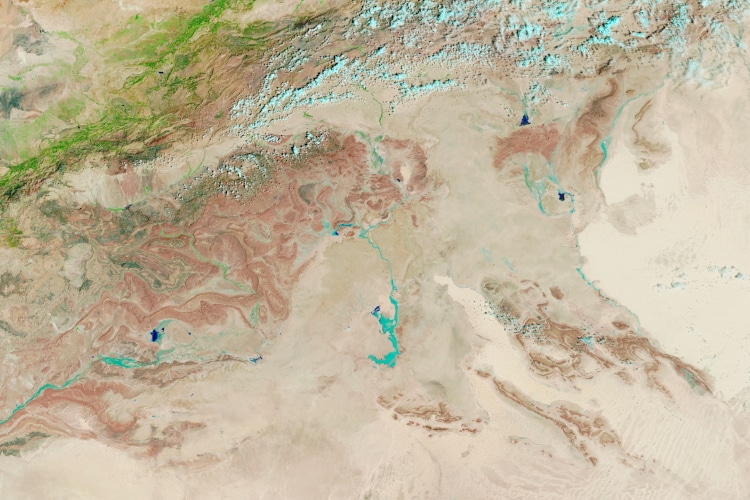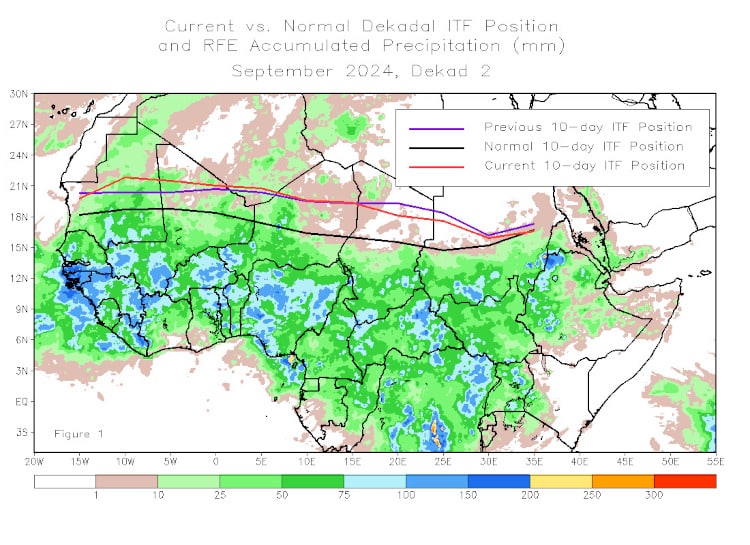
Photo: NASA via Wikimedia Commons (Public domain)
The Sahara desert is known for being one of the driest areas in the planet. However, an unusual weather phenomenon has caused plant life to pop up in the otherwise barren landscape. The NASA Earth Observatory has shared some revealing images of vegetation growing in arid regions of Morocco, Algeria, Tunisia, and Libya following an influx of heavy rainfall.
On September 7 and 8, an extratropical cyclone drenched a large swath of northwestern Africa, causing pockets of green to pop all over the Sahara desert; particularly, shrubs and trees in low-lying areas, like riverbeds. While some areas of the Sahara receive just a few inches of rain per year, according to preliminary satellite analysis by NASA, the rainfall accumulations were up to half a foot in the areas affected.
The Sahara desert wasn’t always the arid landscape it is today. According to a 2012 study by Peter de Menocal, president and director of the Woods Hole Oceanographic Institution, between 11,000 and 5,000 years ago, the Sahara was covered with vegetation and lakes year round—meaning that when there is significant rainfall, dormant vegetation in area quickly sprouts, turning dry-looking areas into lush landscapes.
The unexpected weather, which caused up to a year’s worth of rainfall in some areas in just a matter of days, was caused by the northward displacement of the storm system. This had formed over the Atlantic Ocean and extended far southward, pulling moisture from equatorial Africa into the northern Sahara, according to NASA. The National Oceanic and Atmospheric Administration’s Climate Prediction Center recorded that the Intertropical Convergence Zone has been sending storms into the southern Sahara since mid-July.
“When you get these really exceptional rainfall events, the dunes become these just incredibly verdant and flowered fields where the plants will just instantly grow for a short period of time to take advantage of,” de Menocal told ABC News. The academic added that it’s normal for the region to get some rainfall every summer due to the West African Monsoon season, but it’s not common for the Intertropical Convergence Zone, also known as the tropical rain belt, to reach as far north as the Sahara.
According to De Menocal, record-high ocean temperatures in the northern Atlantic Ocean have contributed to the shift in the rain belt, bringing heavy rainfall typical of regions in the equator farther north. More so, climate change could cause the rain belt to move even farther north in the future.
“Decades from now, when the larger oceans have warmed more uniformly, we expect the rain belt to actually go back to its original position,” he concluded. “And it can even shift into the other hemisphere.”
The NASA Earth Observatory has shared some revealing images of vegetation growing in the Sahara desert following an influx of heavy rainfall.

August 14, 2024. (Photo: NASA Earth Observatory)
On September 7 and 8, an extratropical cyclone drenched a large swath of northwestern Africa, causing pockets of green to pop all over the arid regions of Morocco, Algeria, Tunisia, and Libya.

September 10, 2024. (Photo: NASA Earth Observatory)
The unexpected rainfall, which caused up to a year’s worth of rainfall in some areas in just a matter of days, was caused by the northward displacement of the storm system.
An extratropical cyclone over the Sahara Desert drenched parts of Morocco and Algeria – bringing up to a year’s worth of rain to some areas. ️ @nasa’s Terra satellite captured floodwaters and some Saharan lakes, usually dry, filled with water. https://t.co/cuS1c73RoA pic.twitter.com/m8Ga8G0FgO
— NASA Earth (@NASAEarth) September 17, 2024
The National Oceanic and Atmospheric Administration’s Climate Prediction Center recorded that the Intertropical Convergence Zone has been sending storms into the southern Sahara since mid-July.

Photo: National Oceanic and Atmospheric Administration’s Climate Prediction Center.
h/t: [ABC News]
Related Articles:
Rare Saharan Antelope Is Brought Back From the Brink of Extinction
Sahara Desert Is Covered in Glittery Ice Crystals During a Rare Ice Dusting
Scientists Find Evidence That Rain First Fell on Earth 4 Billion Years Ago
NASA Releases Stunning New Photographs to Celebrate Chandra Space Telescope’s 25th Anniversary
